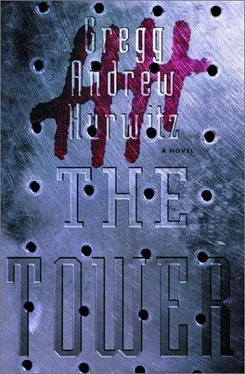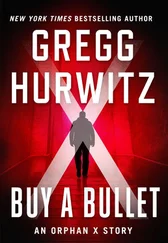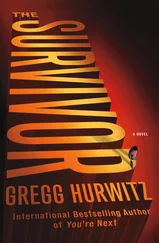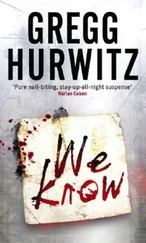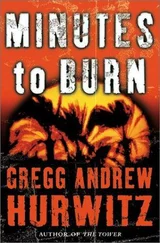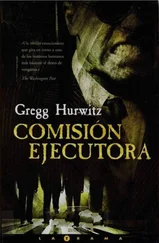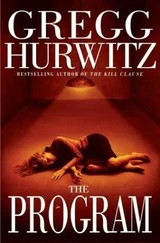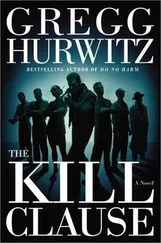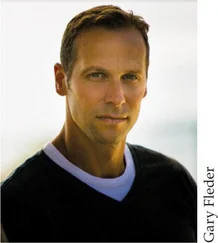Gregg Hurwitz - The Tower
Здесь есть возможность читать онлайн «Gregg Hurwitz - The Tower» весь текст электронной книги совершенно бесплатно (целиком полную версию без сокращений). В некоторых случаях можно слушать аудио, скачать через торрент в формате fb2 и присутствует краткое содержание. Жанр: Триллер, на английском языке. Описание произведения, (предисловие) а так же отзывы посетителей доступны на портале библиотеки ЛибКат.
- Название:The Tower
- Автор:
- Жанр:
- Год:неизвестен
- ISBN:нет данных
- Рейтинг книги:3 / 5. Голосов: 1
-
Избранное:Добавить в избранное
- Отзывы:
-
Ваша оценка:
- 60
- 1
- 2
- 3
- 4
- 5
The Tower: краткое содержание, описание и аннотация
Предлагаем к чтению аннотацию, описание, краткое содержание или предисловие (зависит от того, что написал сам автор книги «The Tower»). Если вы не нашли необходимую информацию о книге — напишите в комментариях, мы постараемся отыскать её.
The Tower — читать онлайн бесплатно полную книгу (весь текст) целиком
Ниже представлен текст книги, разбитый по страницам. Система сохранения места последней прочитанной страницы, позволяет с удобством читать онлайн бесплатно книгу «The Tower», без необходимости каждый раз заново искать на чём Вы остановились. Поставьте закладку, и сможете в любой момент перейти на страницу, на которой закончили чтение.
Интервал:
Закладка:
The interior of the Tower was constructed of thick steel bars. There was barely a quarter of an inch between the bars and the outer wall, which sat over the steel intestines like a stone hide. Not only were the unit walls made from such bars, but also the floors and ceilings.
Home to men who could kill with paper clips and keys, the Tower was designed as the barest possible livable environment. No plaster could be risked for walls, no wood for floors. The steel bars that composed the inside of the Tower had another advantage: They allowed the guards to see through the levels to check on the inmates. Initially, the architects had experimented with an unbreakable glass, but they had found that it fogged heavily with mist from the ocean and created a ventilation nightmare.
The outside wall of each curved cell measured twenty feet, and the cells were five feet in width. Each faced its mirror image across "the Hole," an open cylinder of air that ran straight down the center of the Tower. There were spacings of eight and one-third feet between the units on each side; this ensured that the prisoners never established bodily contact, and that the guards could always remain out of reach.
Due to the fact that the ceiling of each cell also served as the floor for the one above it, the prisoners could most easily communicate with the men directly above or below them. Although this design element may have seemed a lapse in the Tower's tight security, few of the men were tall enough to reach their ceilings, even from their beds. Those who were could hardly get their fingers to the bars, let alone through them. The neck-strained interaction between the floors served the Tower's design: to break the spirits of nearly indomitable men by removing from them all the trappings of civilization.
The cells each had a minuscule toilet with a small tap that swung into place above it, allowing it to double as a sink. The toilets caught the water before it spiraled down through the barred floors. Each unit had a single mattress on a steel frame, and a thick blanket for the chilly nights off the California coast.
The Hole formed the shaft for the platform elevator, four feet in diameter, which was operated by a handheld unit. Precisely framing the elevator was a two-foot platform between the Hole and the unit doors. When not in use, the elevator was raised out of the top of the Hole ten feet in the air, leaving only the dark emptiness below.
When the prisoners were unruly or when it rained (which rarely happened), the large Hatch was swung into place underneath the raised elevator, blocking out all natural light and moisture. However, when the sun was directly overhead and the Hatch was open, light shone through the metal mesh of the raised elevator, and the two men on Level Eleven could see clearly down into the units ten levels beneath them.
A prisoner was shackled around his biceps and wrists when transported, and his thighs were strapped together to allow only minimal leg movement. He was sent down the elevator with a guard on each side. He was always gagged, and often hooded. At all times, one of the two guards had a gun with the safety off trained on the prisoner. The necessity of such seemingly paranoid precautions had been learned at painful expense. Prisoners were only moved once, and they were only moved in.
Before a prisoner was taken to the Tower, a small sensor was surgically embedded in the tip of the ring finger on his left hand. If he escaped, this device allowed his movements to be tracked. The prisoners were put under general anesthesia while the sensors were installed, and were kept heavily drugged until a significant amount of healing had taken place, sometimes five or six days. The Maingate physicians feared if the prisoners fully awakened before then, they would dig the sensors out with their nails and teeth.
Food was delivered to the prisoners twice a day. It came in the form of a large loaf containing all the necessary nutrients to allow an animal to function. A cross between quiche and bread, the loaves were light brown when cooked correctly. They required no plates or silverware, part of the reason for their continued use. They were delivered by a guard at precisely 10:30 A.M. and 7:15 P.M.; he slid them through a small rectangular slot, barely the size of the loaf itself, at the bottom of each unit door.
A long metal arm with two outgrowths at the end was used to guide the loaves through the slot. The loaves were referred to by the inmates as "shithouse bricks." They had minimal taste.
When a prisoner behaved perfectly for a week, he was allowed a large sheet of paper and two crayons with which to entertain himself. A guard held a box through the bars with a metal arm to retrieve the crayons when the time was up. This was called "Sketch Duty."
Sketch Duty was perhaps the only activity that the prisoners unanimously held to be important. It was the sole end of the prisoners' lives to obtain this hour of distraction each week. They could keep the pictures in their cells for two days, and then they were removed and taken to be analyzed at the criminal psychology department of the Ressler Institute on the mainland. The pictures were often used in lectures.
Aside from the occasional books they were allowed, Sketch Duty was all that the prisoners had to break the monotony. Inside the Tower, minutes could stretch to hours, hours to lifetimes.
Despair prevailed in the bowels of the prison; nobody would ever be released and nobody had ever escaped its dark confines. The inmates sat pressed against the metal bars of their cramped cells, reciting their tales in the broken tongues of idiots.
Chapter 2
Allander Atlasia sat on the bed wrapped in a frayed blanket, his knees tucked tightly to his chin. The small bed was more than ample for his wiry frame. Outside, the waves pounded ceaselessly against the side of the Tower, causing the structure to hum with a deep vibration. Allander braced himself against the onslaught, relaxing his muscles slightly before another wave caused the Tower to shudder anew.
His long, stringy hair curved in wisps to his cheeks, a dark brown cascade that accented his high cheekbones. His eyes squinted, just barely, making him look either sarcastic or like a child protecting his eyes from the sun. At first glance, many people dismissed Allander as a skinny adolescent recently grown to manhood, but he was in fact quite strong.
Allander's moodiness was the most terrifying aspect of his personality. When he'd been in the correctional ward as an adolescent, nurses had noted that he seemed to wake up as a different person every morning. He was a whimpering child when the rain hammered against the window, a sullen boy who poked frogs' eyes out with his finger, a sweet youth who cried against a nurse's bosom, an angry adolescent who painfully tweaked the incipient breasts of the girls in the ward.
He could be deathly frail or dreadfully powerful. After a year in prison, he came down with a case of pneumonia. A nurse who was new on rotation failed to see the security signs outside his room. She unlocked the door and entered alone to check on him. His face was tinged blue and his teeth chattered loudly, causing an echo in the sterile room. She sat at his bedside and rocked the boy (who was now close to twenty) against her breast until he warmed beneath his blankets.
When the security guard walked past the infirmary, he noticed the open door. Gun drawn, he charged into the room and pulled the nurse away despite her protestations. After she complained about the incident, the warden released several photographs of Allander's victims for her perusal. She sat down after the second one, requested a glass of water after the fifth, and turned in her resignation after the seventh. Through the bars on his window, Allander watched her leave the prison, shaking her head, her steps slow and unsure.
Читать дальшеИнтервал:
Закладка:
Похожие книги на «The Tower»
Представляем Вашему вниманию похожие книги на «The Tower» списком для выбора. Мы отобрали схожую по названию и смыслу литературу в надежде предоставить читателям больше вариантов отыскать новые, интересные, ещё непрочитанные произведения.
Обсуждение, отзывы о книге «The Tower» и просто собственные мнения читателей. Оставьте ваши комментарии, напишите, что Вы думаете о произведении, его смысле или главных героях. Укажите что конкретно понравилось, а что нет, и почему Вы так считаете.
